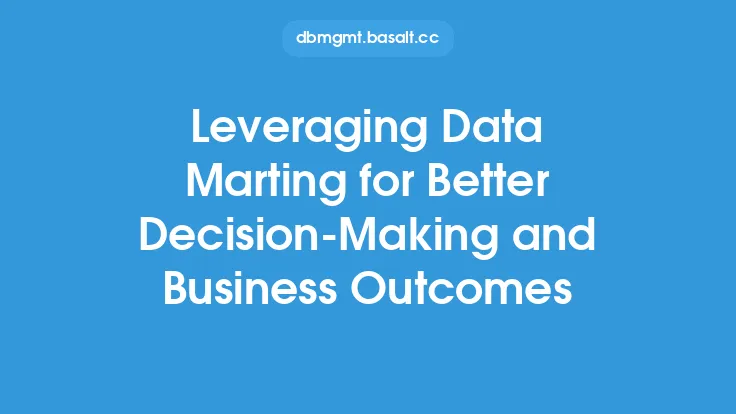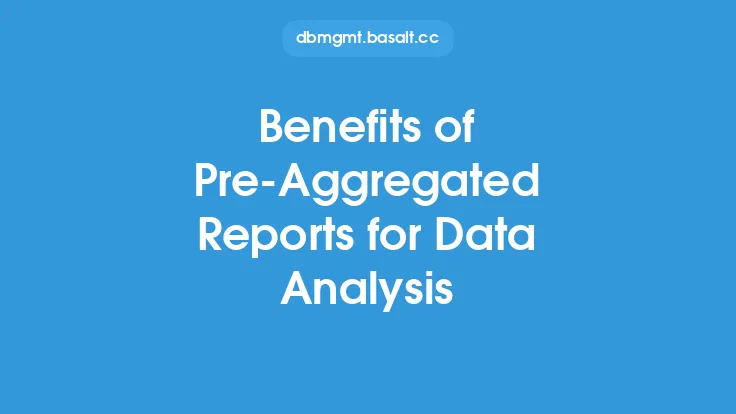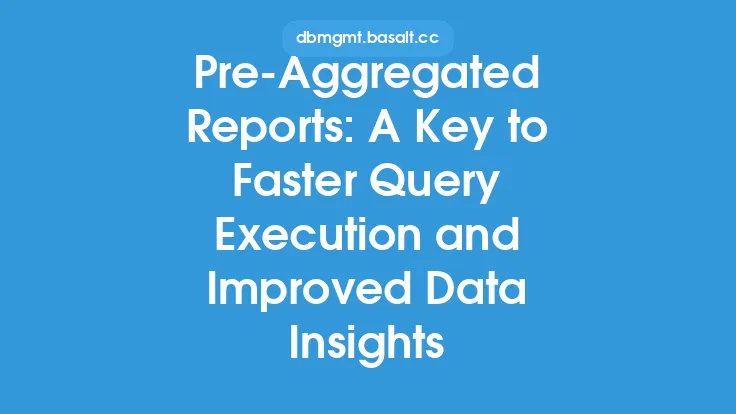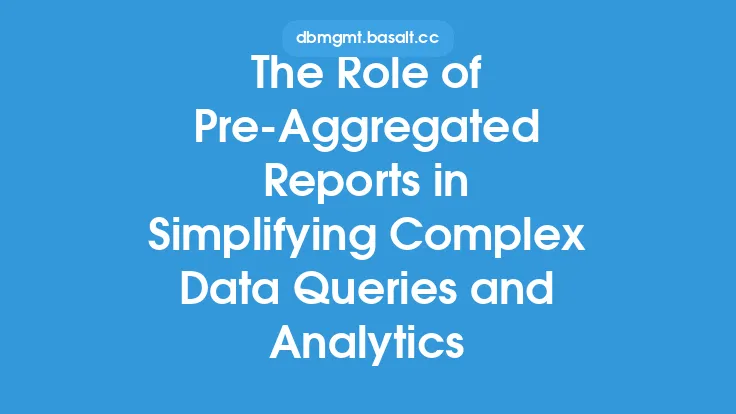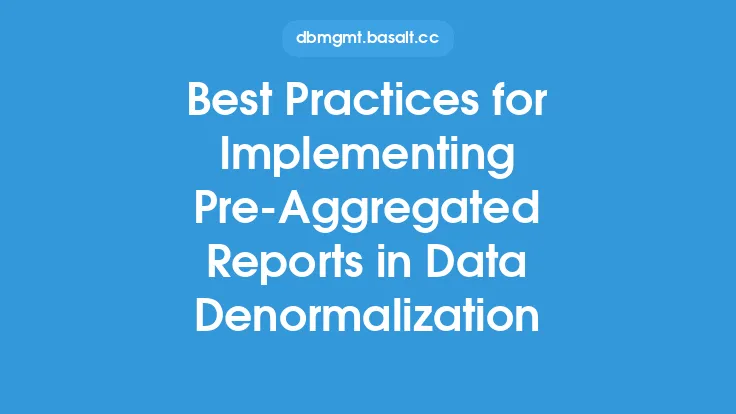Data visualization and decision-making are crucial aspects of any organization, as they enable businesses to extract insights from their data and make informed decisions. One effective way to enhance data visualization and decision-making is by leveraging pre-aggregated reports. Pre-aggregated reports are a type of data denormalization technique that involves pre-calculating and storing aggregated data in a separate table or database, making it easily accessible for querying and analysis.
Introduction to Pre-Aggregated Reports
Pre-aggregated reports are designed to improve the performance and efficiency of data analysis by reducing the need for complex queries and calculations. By pre-aggregating data, organizations can simplify their data queries, reduce the load on their databases, and provide faster access to critical business information. Pre-aggregated reports can be used in various applications, including business intelligence, data warehousing, and big data analytics.
Key Characteristics of Pre-Aggregated Reports
Pre-aggregated reports have several key characteristics that make them useful for data visualization and decision-making. These characteristics include:
- Pre-calculated aggregates: Pre-aggregated reports store pre-calculated aggregates, such as sums, averages, and counts, which can be used to generate reports and dashboards.
- Improved query performance: By storing pre-aggregated data, pre-aggregated reports can improve query performance, reducing the time it takes to generate reports and analytics.
- Simplified data analysis: Pre-aggregated reports simplify data analysis by providing a pre-processed dataset that can be easily queried and analyzed.
- Enhanced data visualization: Pre-aggregated reports enable enhanced data visualization by providing a simplified dataset that can be used to generate reports, dashboards, and other visualizations.
Benefits of Leveraging Pre-Aggregated Reports
Leveraging pre-aggregated reports can bring several benefits to an organization, including:
- Faster decision-making: Pre-aggregated reports provide fast access to critical business information, enabling organizations to make informed decisions quickly.
- Improved data insights: Pre-aggregated reports provide a simplified dataset that can be easily analyzed, enabling organizations to gain deeper insights into their data.
- Enhanced data visualization: Pre-aggregated reports enable enhanced data visualization, making it easier for organizations to communicate complex data insights to stakeholders.
- Reduced database load: Pre-aggregated reports reduce the load on databases, improving overall system performance and reducing the risk of database crashes.
Best Practices for Leveraging Pre-Aggregated Reports
To get the most out of pre-aggregated reports, organizations should follow best practices, including:
- Identify key performance indicators (KPIs): Organizations should identify their key performance indicators and design pre-aggregated reports that provide insights into these KPIs.
- Design reports for specific use cases: Pre-aggregated reports should be designed for specific use cases, such as sales analysis or customer segmentation.
- Use data visualization tools: Organizations should use data visualization tools to generate reports and dashboards from pre-aggregated data.
- Monitor and update reports: Pre-aggregated reports should be regularly monitored and updated to ensure they remain relevant and accurate.
Common Use Cases for Pre-Aggregated Reports
Pre-aggregated reports can be used in various applications, including:
- Business intelligence: Pre-aggregated reports can be used to generate reports and dashboards that provide insights into business performance.
- Data warehousing: Pre-aggregated reports can be used to simplify data analysis and provide fast access to critical business information.
- Big data analytics: Pre-aggregated reports can be used to analyze large datasets and provide insights into complex data patterns.
- Data visualization: Pre-aggregated reports can be used to generate reports and dashboards that communicate complex data insights to stakeholders.
Challenges and Limitations of Pre-Aggregated Reports
While pre-aggregated reports can bring several benefits to an organization, there are also challenges and limitations to consider, including:
- Data consistency: Pre-aggregated reports require consistent data to ensure accuracy and reliability.
- Data freshness: Pre-aggregated reports require regular updates to ensure data freshness and relevance.
- Data complexity: Pre-aggregated reports can be complex to design and implement, requiring specialized skills and expertise.
- Storage requirements: Pre-aggregated reports require additional storage space, which can be a challenge for organizations with limited resources.
Future of Pre-Aggregated Reports
The future of pre-aggregated reports is promising, with emerging trends and technologies, such as cloud computing, artificial intelligence, and machine learning, expected to enhance the capabilities and applications of pre-aggregated reports. As data volumes continue to grow, pre-aggregated reports will play an increasingly important role in simplifying data analysis and providing fast access to critical business information. Organizations that leverage pre-aggregated reports effectively will be well-positioned to gain a competitive advantage in their respective markets.
